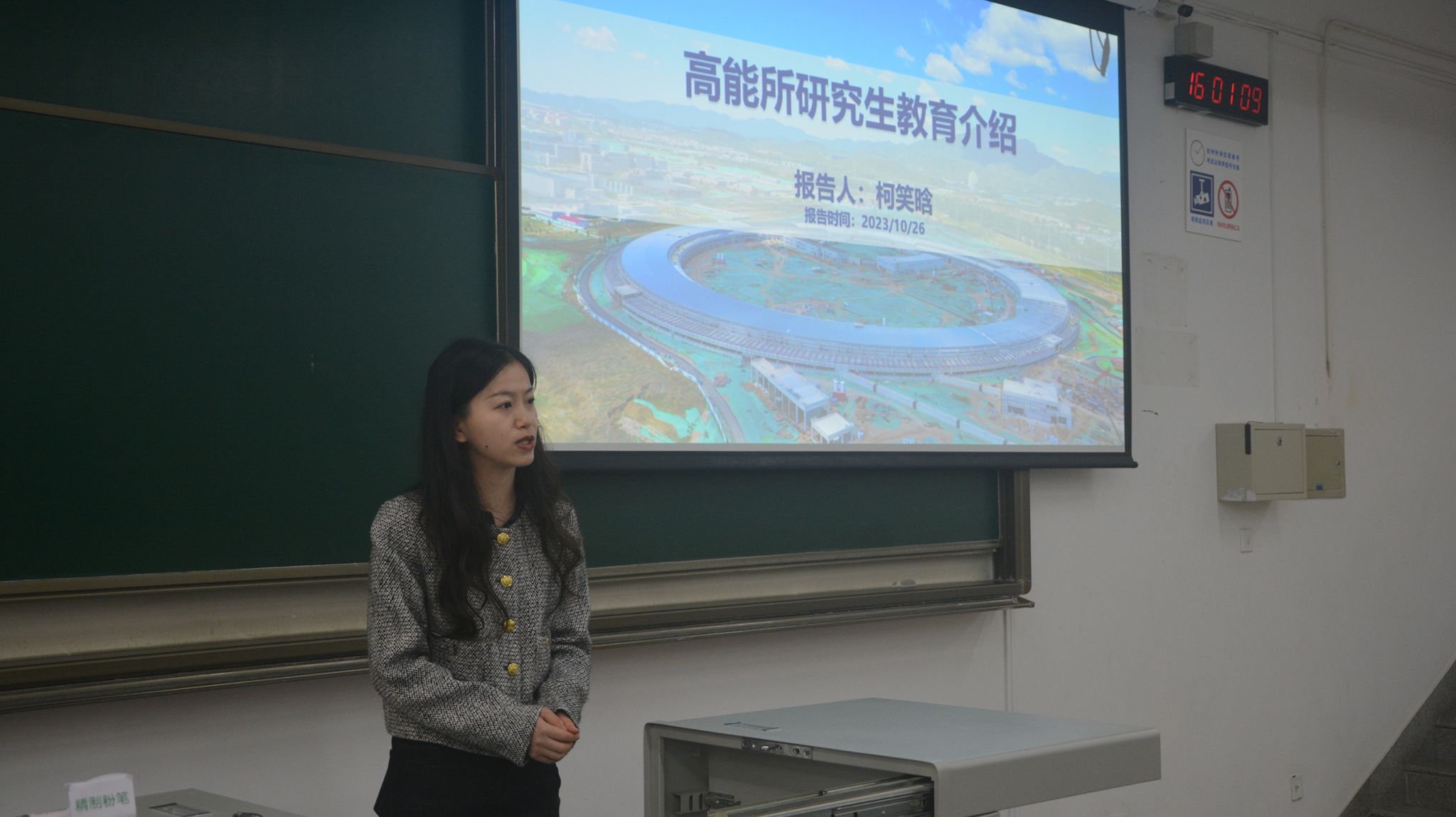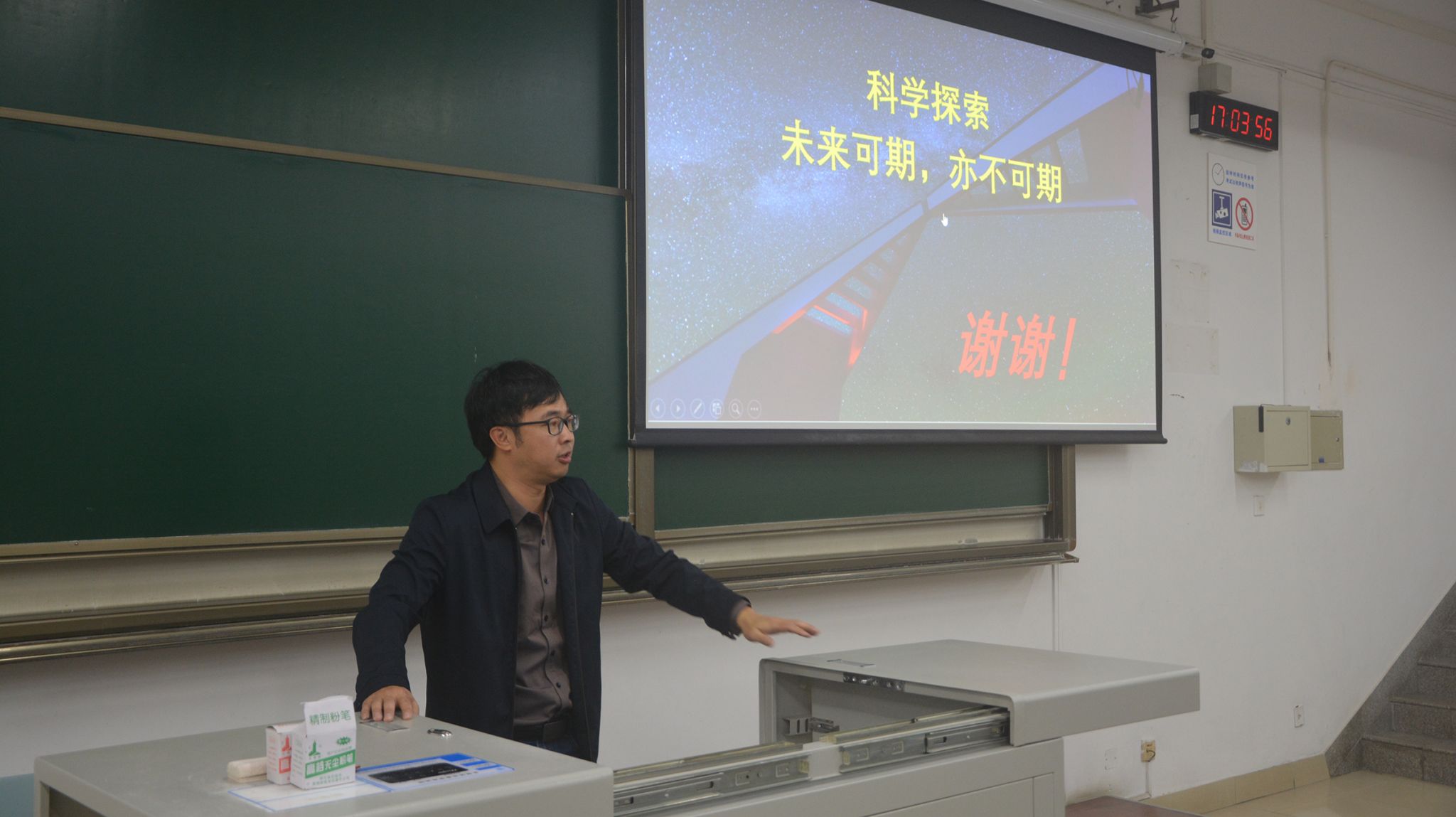On the afternoon of October 26th, Professor Zhang Shoushan and Ms. Ke Xiaohan from the Institute of High Energy Physics, Chinese Academy of Sciences, delivered presentations on the introduction of the Institute and the current status and future plans of cosmic ray detection at the X1211 classroom in the Xipu campus. All students from the School of Physical Science and Technology, Class of 2022, attended the lecture, which was moderated by Professor Zhu Fengrong.

The Institute of High Energy Physics, Chinese Academy of Sciences, serves as a comprehensive research base for high-energy physics, advanced accelerator physics and technology research and development, as well as advanced radiation technology and applications. Formerly known as the Institute of Modern Physics of the Chinese Academy of Sciences, established in 1950, it was later renamed the Institute of Physics and the Institute of Atomic Energy. According to Ms. Ke Xiaohan, the Institute of High Energy Physics has achieved significant accomplishments in various areas, such as the study of neutrinos and electron acceleration.

Professor Zhang Shoushan focused on introducing the Institute's most proud project—the Large High Altitude Air Shower Observatory (LHAASO). Located in Daocheng, Sichuan Province, this observatory, as a national major scientific and technological infrastructure, has officially passed the national acceptance. The observatory features a globally leading ground-based detector array, a massive underground data processing system, and satellite-based sky monitoring, forming a comprehensive and integrated system. The daily life of researchers is quite unique, with activities like rowing while collecting data in a specific device being a common practice. This unconventional routine serves as a form of physical exercise, adding a touch of interest to what may seem like monotonous work. In conclusion, Professor Zhang expressed his hopes for more students to join the Institute of High Energy Physics and contribute to the exploration of a new world behind the sky by participating in the cosmic ray observatory.

The presentations by the two teachers were indeed fascinating and garnered applause from the audience. During the Q&A session that followed, students had the rare opportunity to engage in face-to-face discussions with the experts. One student showed keen interest in the joint program between the Institute of High Energy Physics, Chinese Academy of Sciences, and our university, known as the "Qian Sanqiang" class. Our teachers provided detailed explanations of the various plans of the Chinese Academy of Sciences and expressed sincere expectations and encouragement for the students. No one is born strong; all brilliance is the result of countless drops of hard work. The teachers and researchers from the Chinese Academy of Sciences hope that we will face challenges without fear, move forward courageously, explore with determination, and overcome difficulties with a mindset of breaking them down into manageable tasks.





